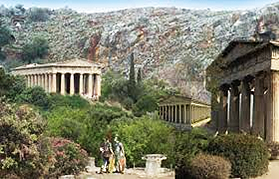Download Printable PDF Version
Sometimes the years seem to hurtle by. There are days when we may wonder: How do I let it all get away so fast? How can I hold on to it better? How can I see the sacredness of each day better?
To some degree the numbering of years helps and, like birthdays and the change of seasons, the marking of a New Year invites us to remembrance and recollection.
The celebration on January 1, of Mary, the Holy Mother of God, who “treasured all these things and reflected on them in her heart,” starts our new year. The Gospel reading for the Liturgy of this Solemnity tells us of shepherds who took time to approach the mystery and wondrously saw Mary and Joseph and the child. Once they saw, they understood and glorified and praised God.
The Gospel Reading also tells us that Mary kept all these things, reflecting on them in her heart.
What are the things Mary reflected on “in her heart”? Both marvelous events such as the angelic message relayed by the shepherds, and the painful circumstance such as a birth in a stable.
Mary grappled with both sides of the mystery of Jesus’ birth: the miraculous and the everyday; the joyous and the painful; what was already unfolding and what was yet to be revealed.
In all this she was pondering the mystery of God’s presence and thus sublimely models how we too can recognize the Word being made flesh and dwelling among us.
Mary reflected “in her heart” on the mystery unfolding within and around her. This same mystery is revealed when God pours “the Spirit of his Son into our hearts,” making us children of God.
The ancient feast of Epiphany (this Sunday) also celebrates our “seeing”, our witnessing of the mystery that God could take our very flesh and bones. In the light of the Incarnation – Christmas-, with the “showing” of God in Jesus, all is changed, all human ordinariness transformed, all of the commonplace transfigured, elevated, and blessed.
A sense of how God “shows” himself each day; how his grace is manifest in every numbered year, allows us to take possession of our moments gently as time flashes by. We develop a richer taste for life itself, and our thanksgiving reaches deeper into our being.
If we fully enter into the revelation of the Solemnity of Mary, the Holy Mother of God , if we truly savor it and thereby savor the lives we’ve been gifted with, we may find ourselves joining the long march of witnesses, sent to all times and nations, to share the blessing of God that the Book of Numbers (First Reading) gives to us:
“The Lord bless you and keep you. The Lord’s face shine upon you and be gracious to you. The Lord look kindly upon you and give you peace.”
Once we are beyond the Solemnity of Mary, the Holy Mother of God, and the Christmas season, we may tend to forget about the importance of the incarnation for our daily living. Mary teaches us that continued active reflection on this mystery is how we are drawn more deeply into its fullness and able more perfectly to live in the grace of being children and heirs of God.
We begin our new year by remembering and honoring Mary, chosen by God to bear and birth the savior of the world. May this remembrance urge us to give birth to Christ renewed in our lives; our decisions, our relationships.
Happy, peaceful, New Year!
 This practice was repeated as temples honoring various emperors were built across the empire over the centuries. Herod the Great’s temple to honor Caesar Augustus in Caesarea Philippi was part of the backdrop behind Jesus’ question to the disciples.
This practice was repeated as temples honoring various emperors were built across the empire over the centuries. Herod the Great’s temple to honor Caesar Augustus in Caesarea Philippi was part of the backdrop behind Jesus’ question to the disciples.